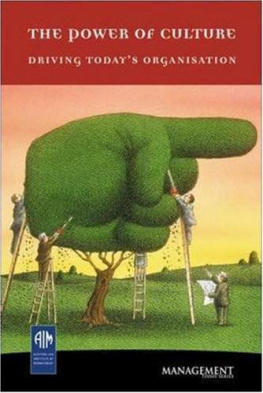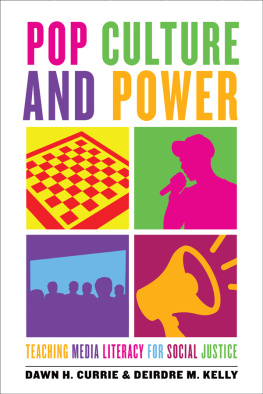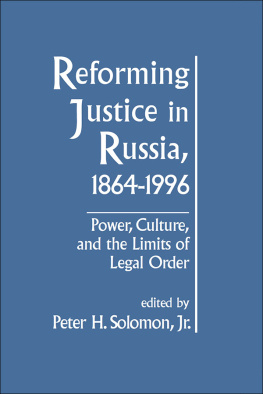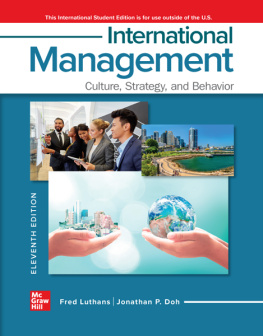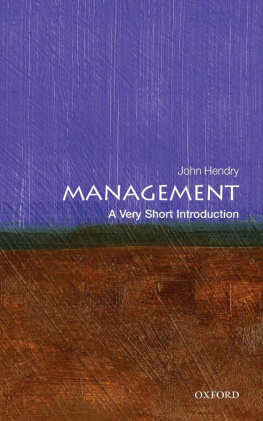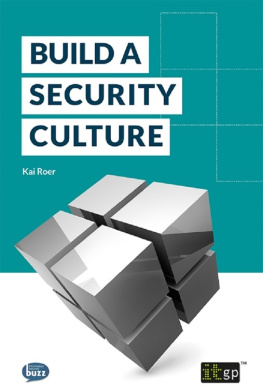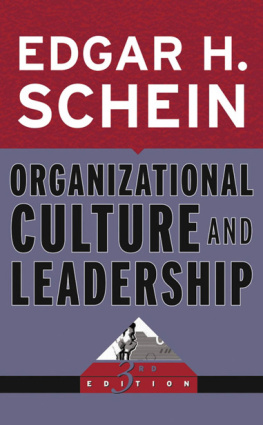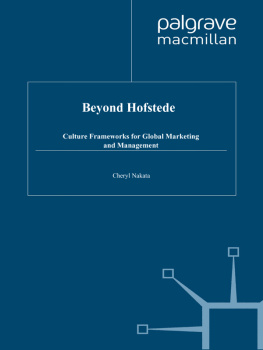The Power ofCulture-Driving Today's Organisation
Series Editors
Carolyn Barker
and
Robyn Coy
Sydney New York San Francisco Auckland Bogot Caracas
Lisbon London Madrid Mexico City Milan Montreal New Delhi
San Juan Singapore Tokyo Toronto
Text 2004 Australian Institute of Management
Illustrations and design 2004 McGraw-Hill Australia Pty Ltd
Additional owners of copyright are acknowledged on the Acknowledgments page.
Apart from any fair dealing for the purposes of study, research, criticism or review, aspermitted under the Copyright Act, no part may be reproduced byany process without written permission. Enquiries should be made to the publisher, marked for theattention of the Permissions Editor, at the address below.
Every effort has been made to trace and acknowledge copyright material. Should anyinfringement have occurred accidentally the authors and publishers tender their apologies.
Copying for educational purposes
Under the copying provisions of the Copyright Act, copiesof parts of this book may be made by an educational institution. An agreement exists between theCopyright Agency Limited (CAL) and the relevant educational authority (Department of Education,university, TAFE, etc.) to pay a licence fee for such copying. It is not necessary to keep recordsof copying except where the relevant educational authority has undertaken to do so by arrangementwith the Copyright Agency Limited.
For further information on the CAL licence agreements with educational institutions, contactthe Copyright Agency Limited, Level 19, 157 Liverpool Street, Sydney NSW 2000. Where no suchagreement exists, the copyright owner is entitled to claim payment in respect of any copiesmade.
Enquiries concerning copyright in McGraw-Hill publications should be directed to thePermissions Editor at the address below.
National Library of Australia Cataloguing-in-Publicationdata:
The power of culture: driving today's organisation.
Bibliography.
Includes index.
ISBN 0 074 71381 7.
1. Corporate culture. 2. Organizational behaviour. 3. Management.
I. Coy, Robyn. (Series: Management Today (McGraw-Hill)).
658.402
Published in Australia by
McGraw-Hill Australia Pty Ltd
Level 2, 82 Waterloo Road, North Ryde NSW2113
Acquisitions Editor:
EikoBron
Production Editor:
KathrynMurphy
Editor:
Sharon Neville
Proofreader:
KathyRiley
Indexer:
Jon Jermey
Designer (cover and interior):
Lucy Bal
Cover image:
ThePhotolibrary
Illustrator:
Alan Laver,Shelly Communications
Typeset in Bembo by Post Pre-Press Group
Printed on 80 gsm woodfree by Pantech Limited, Hong Kong.
Information contained in this work has been obtained by McGraw-Hill from sources believed tobe reliable. However, neither McGraw-Hill nor its authors guarantee the accuracy or completeness ofany information published herein, and neither McGraw-Hill nor its authors shall be responsible forany errors, omissions or damages arising out of the use of this information. The work was publishedwith the understanding that McGraw-Hill and its authors are supplying information but are notattempting to render engineering or other professional services. If such services are required, theassistance of an appropriate professional should be sought.
Preface
When we seek inspiration for new books in this series, we listen to the heartbeat ofmanagement. The Australian Institute of Management works in the thick of organisationaldevelopment. Managers and leaders constantly tell us what they think and how they are coping. Weoften hear about the current climate in the context of what keeps managers awake at night! This isnot to suggest that managing and leading organisations, large or small, is always about dark rainclouds and looming disasters. It does, however, lead us to the central theme of this book, which ishow to make organisations work well through the alignment of people and vision.
We know that culture is well and truly on the radar of managers right now. But surely thathas been no different for decades?
It was in the 1970s that theorists first discussed organisations in terms of culture'. Thiswas the result of a cross-fertilisation between the evolving area of organisational design and theunderstanding of human beings through the field of anthropology.
Throughout the eighties, the term organisational culture' became part of the managementlexicon. By the end of that decade, culture was established as a lever for improving organisationalperformance.
On to the nineties, with the backdrop of globalisation and the heady days of the dot-comboom. A new sort of culture drove the phenomenal success of many of the new-world' companies thattook the markets by storm. Entrepreneurial titans and guru CEOs pulled apart and reforged theirbusinesses, and talked and wrote about it everywhere. They were leading a revolution-bigger,faster, crazier, greedier-and for a while it worked. Demand outstripped supply, expectationsexceeded reality, culture became a cult and hype was king. For a minute it looked like it was goingto be a tech-led world... but the bubble burst, and then acts of terrorism changed that contextforever.
The nineties showed business that culture could generate extraordinary outcomes, innovationand competitive advantage. Unfortunately, for many the concept was irrevocably associated withhubris and hyperbole, the cult of the personality, and the pathology and greed of the recentboom.
The new century dawned, and saw business searching for ways to develop the most valuableasset in the burgeoning knowledge economy', that is, people, and to find mechanisms for aligningthe tacit with the tangible.
This brings us back to our proposition: the concept of culture is resurging. Someorganisations understand it very well. Others still have a way to go (and, in fact, we include achapter on businesses behaving badly to demonstrate this point).
In a world where the only constant is change, it is not surprising that the markets areassessing CEOs by their change management credentials and their ability to shape and align culturewith strategic direction. This is a fundamental change, as it widens the focus from return to theshareholder or bottom-line outcomes, and adds in a dollop of soft stuff'.
But what is culture? This book contains a variety of definitions to help you come to gripswith the concept, but here are a few that we like. Culture is the personality of the organisation;the glue or invisible mortar that holds the entity together. It is the way we do things aroundhere' driven by strategic intent. Some of our authors suggest that developing an enduring cultureis simple, but none of them say it is easy. From our research for this book, and from what we havelearned from our authors (each with a different perspective of the subject) we can assure ourreaders that cultural reform is evolutionary not revolutionary.
Major change and intervention programs cannot reinvent or create a culture overnight. Whereasthe structure and size of an organisation can be altered in a relatively short time, culturalchange takes much longer. It is this lag effect that can sabotage plans for lasting change. In ourexperience, when a new strategic context is introduced, it often takes two or three changes of keystaff to move the culture to the next level. So leaders must have a very strong view about what itis they want to create and a medium to long-term plan for getting there.
We have observed that employees, when faced with change, will form three groups. The firstgroup will resist, digging in their heels and actively working against reform. The second group canbe viewed as neutral, waiting to see what will happen, but not necessarily lending theirintellectual weight to positive elements of the change process. The third group will embrace thenew direction and sign on with enthusiasm.

